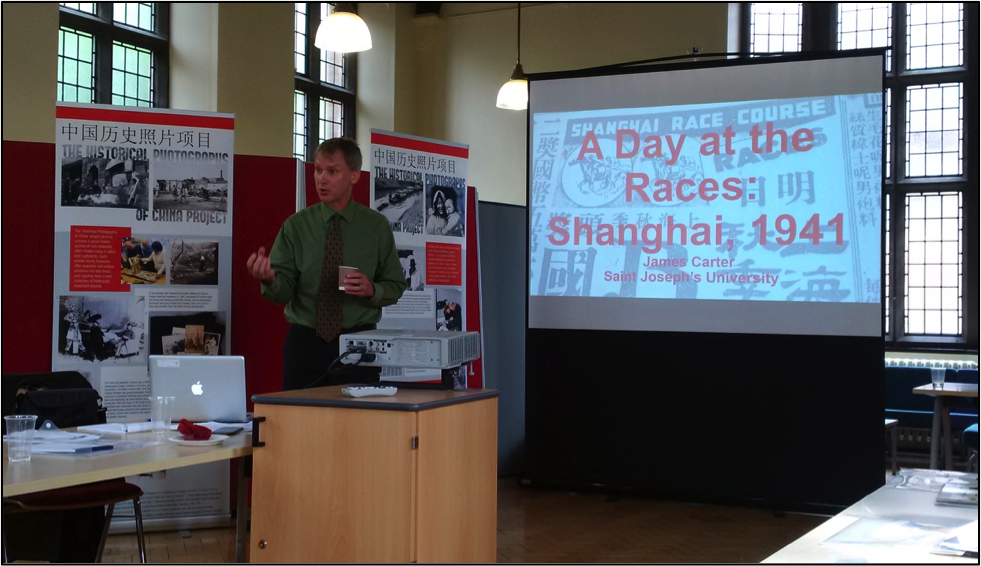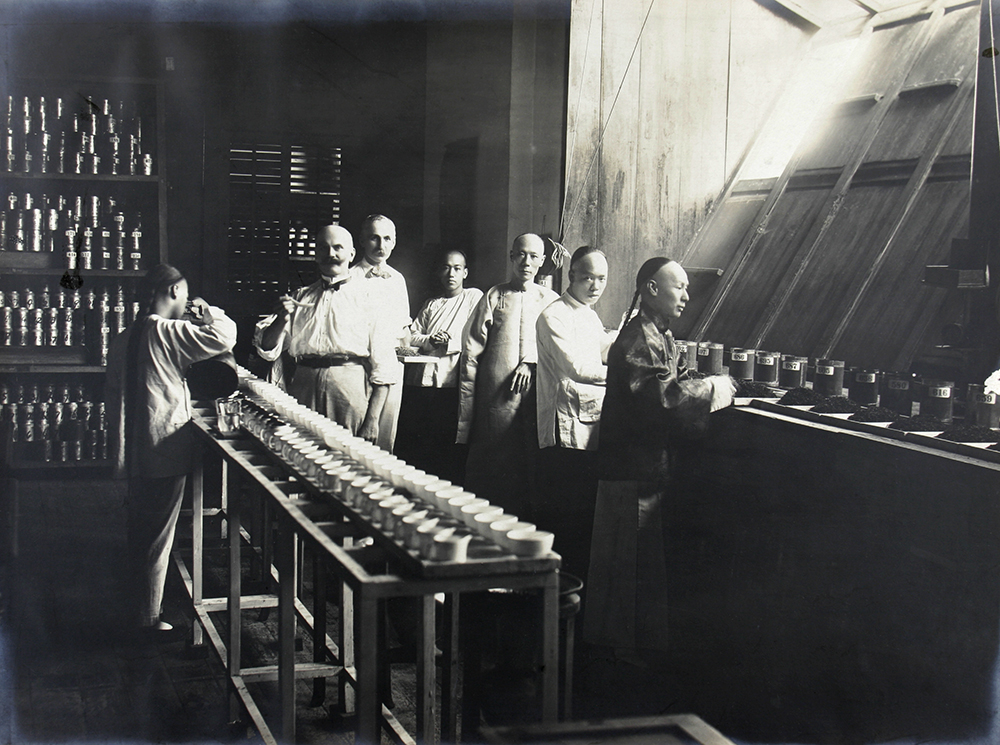Dr Sabrina Fairchild, who composed this blog, and who organised this workshop, completed her PhD at the University of Bristol in Spring 2016 with a thesis on ‘Fuzhou and Global Empires: Understanding the Treaty Ports of Modern China, 1850-1937.’
On 23-25 July, the History Department at the University of Bristol in association with the Historical Photographs of China (HPC) project ran a successful three-day postgraduate workshop on the uses of photography in modern Chinese History. For the HPC project this was a sort of tenth anniversary party celebrating a decade of finding, cataloguing and publishing valuable photographic resources that might otherwise have been lost in someone’s attic. For the 13 postgraduate researchers – from the UK, Europe, US and Asia – this represented a change to come to grips with visual records that often seems more tantalizing than understandable. These students brought their combined experience and knowledge from history, art history and historical archaeology to bear on discussions ranging from the photograph as a historical document to the technicalities of late-nineteenth and early-twentieth-century camera technology.
When we organized the workshop we had two main questions in mind: why were students interested in using historical photographs of China in their research and what did they expected to get out of the workshop. Unsurprisingly, most responded to the first that photographs enriched their research in ways they felt went beyond textual material. There was something about the visual material that deepened their understanding of their research topics, or even revealed issues previously hidden by other sources. What was more surprising was their answer to our second question. Almost every single student wanted to know more about the methodology around visual material; how do we use photographs seemed to be the central issue of the workshop. From their related questions on finding material, interrogating its content, and tracing its publication and circulation became obvious points of discussion.

Professor Jay Carter, Saint Joseph’s University, introducing participants to the issues of racing and photography in the history of modern China.
When it came to addressing these questions, Professor Jay Carter’s keynote talk ‘A Day at the Races: Shanghai, 1941’ gave us a place to start. Using photographs of the Shanghai Race Club’s last Champion’s Day race in 12 November 1941, Dr. Carter demonstrated how photographs provide a unique window into the makeup of Shanghai’s society. Although newspaper articles focussed on the ponies and their owners, photographers pointed their lenses towards both the races and the audiences providing a much more varied picture of those attending. By placing both the coverage and photographs of the Champion’s Day race in its wider context, Dr. Carter also demonstrated how it represented one event in a day beset by at least two other significant events – Silas Hardoon’s funeral and Sun Yat Sen’s birthday – for Shanghai’s Western and Chinese society. That the Champion’s Day race continued to dominate media coverage tells us much about the types of activities that were deemed important.
On the second day, a series of hands-on master-classes followed up these themes. University of Bristol staff members, Professor Robert Bickers, Dr. Josie McLellan, Dr. Erika Hanna and Dr. John Lyons generously lent us their time to explain how they had previously used photographs in their research. Very purposefully, the breadth of the research interests – from China, to the German Democratic Republic, to Ireland – demonstrated the wider similarities in this form of research. Obviously, content was important. Many of the photographs offered counter-narratives to broader, entrenched historical certainties. But methodological questions also dominated. The materiality of the photograph was important. Patricipants agreed that historians needed to think more about how these photographs were collected, preserved and circulated. Both the photograph album and the scrapbook deserve to be treated as historical objects in their own right. Similarly, all present felt that the practices around taking photographs deserved greater attention. For example, how did these photographs fit into practices of work, leisure, policing, ethnography, and others? Clearly, people are trying to document their lives but these photographs suggest that practices stretched well beyond issues of self-fashioning and domesticity.

This photograph drives my own research into the global connections of nineteenth-century China. John Charles Oswald (third from left) in tea-tasting room, Foochow, 1890s. Oswald Collection, Os05-164, © 2008 SOAS.
I was particularly struck by one comment made by Erika Hanna on the dialogue between image, text and methods. Often historians are accused of poorly using photographs as ‘pretty pictures’ to liven up their text. The assumption seems to be that historians are not rigorous when interrogating the material and its place within their research. This has always puzzled me considering the wealth of approaches and methodologies historians employ when dealing with textual material. This probably also explains, unfortunately, the general sense of unease among postgraduate when dealing with visual resources. To counter this, Dr. Hanna argues that the photographs need to come first. That is, the visual sources need to drive the research question rather than supplement the text. This seems to me a fruitful way to avoid such accusation of analytical sloppiness and begin building a historical methodology that forefronts the photograph.
The third-day of the workshop offered patricipants a chance to reflect on how the previous discussions shaped, or will shape, their research. More time could have been devoted to this as the research emerging from the mix of MA students and PhD candidates seems set to make visual sources an indispensable resource in many fields. To continue these discussions we are looking at putting together a postgraduate and early career network that brings together the new research on photography and modern China. Discussions are already underway on how to follow up this workshop with another in 2017. In the meantime, you can also view a Storify account of these three stimulating days in June.
‘Snapshots in Time: Photography and History in Modern China’ was funded by a HEFCE Postgraduate Student Support award to the School of Oriental and African Studies for ‘Sustainable Funding for Language-based Area Studies’ which provided support for training and outreach events.
